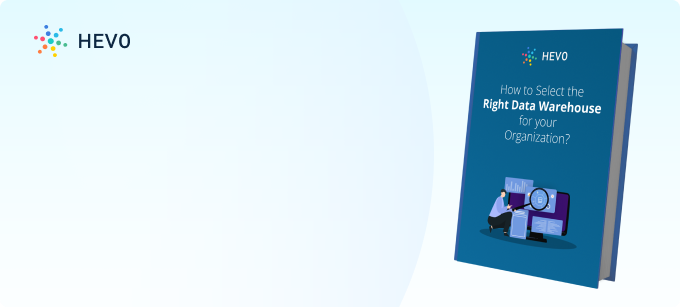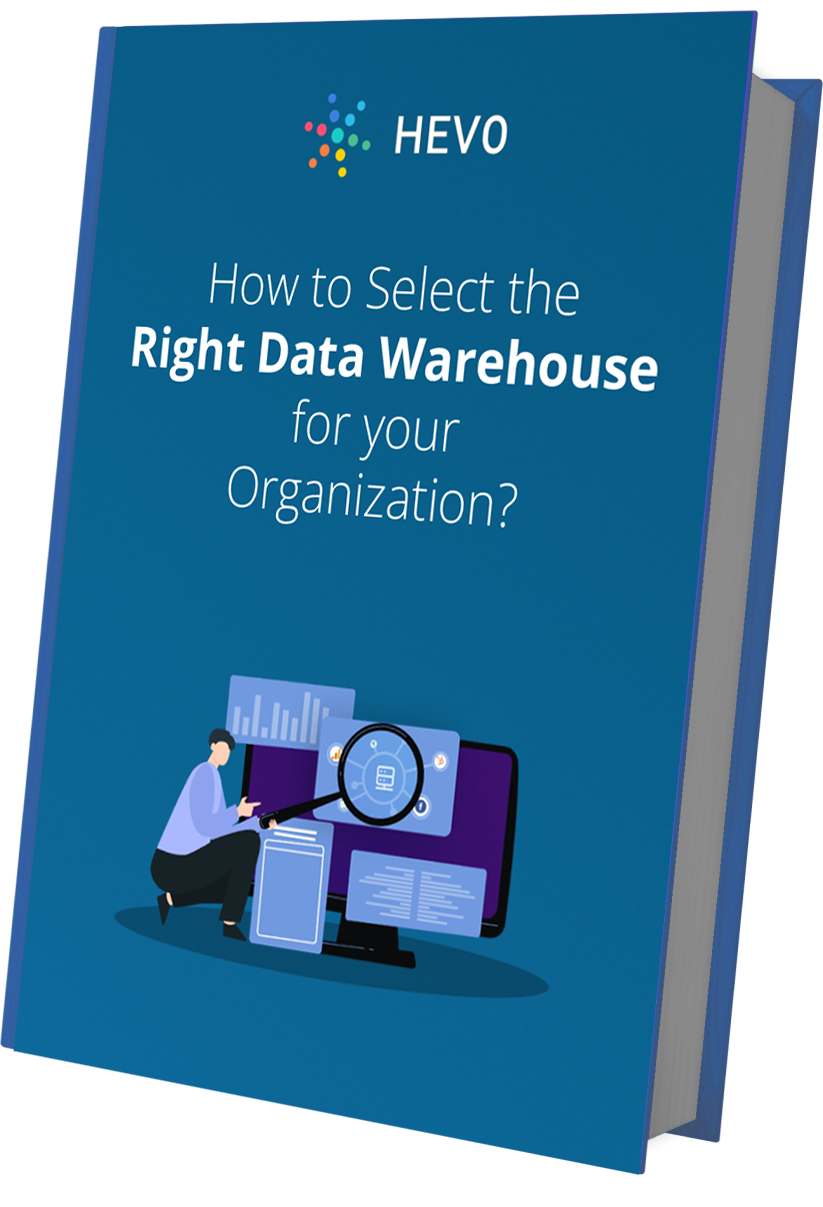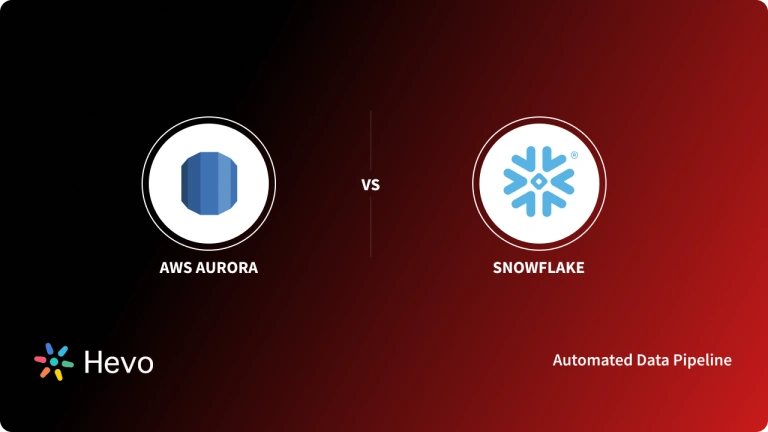Many organizations are moving their data to the cloud. The reason is that companies have realized the benefits of storing their data in the cloud including reduced data storage costs, ease of access to data, access to Data Analytics tools, etc. However, most organizations find themselves at crossroads when making a decision on the modern Cloud Data Platform to go with. Azure Synapse and Snowflake are popular Cloud Data Solutions available to individuals and companies today.
Both Synapse and Snowflake Analytics offer parallel processing capabilities to distribute the analysis of data across many nodes in the cloud. However, the two have a number of differences that can help you make a decision on which one suits your business needs. In this article, you will be exploring the topic Azure Synapse vs Snowflake based on 6 key metrics. You will also be looking at a few shortcomings of the two tools at the end of the article.
Migrate your data into Azure or Snowflake seamlessly with Hevo. Our platform offers both pre and post-load transformations, ensuring your data is ready for analysis.
- Easy Integration: Connect and migrate data into Snowflake in minutes without any coding.
- Flexible Transformations: Use simple drag-and-drop transformations or custom Python scripts.
- Pre and Post-Load Transformations: Transform your data at any stage of the migration process.
Join over 2000 satisfied customers, including companies like Cure.Fit and Pelago, who trust Hevo for their data management needs.
Get Started with Hevo for FreeTable of Contents
Introduction to Azure Synapse
Azure Synapse Analytics is an unlimited Data Analytics service that brings together Data Storage and Big Data Analysis. Azure Synapse architecture offers a single workload for all workloads during data processing for immediate data prediction and Business Intelligence needs. This has been made possible by integration with Azure Machine Learning and Power BI and the ability of Azure Synapse to integrate mathematical Machine Learning models via the ONNX format.
Azure Synapse gives its users the freedom to query huge volumes of data either on-demand serverless for ad hoc analysis and data exploration or with provisioned resources at scale. To fully capitalize on its advanced capabilities, many organizations choose to hire Azure engineers who specialize in tailoring Azure Synapse deployments to their unique analytics needs.
The benefits of Azure Synapse Analytics are as follows:
- It offers full standard CSV support to user-controlled file selection.
- Azure Synapse Analytics allows you to augment Data Lakes with IoT and Event Hubs for streaming in one centralized platform.
- In comparison to other cloud providers, Azure Synapse Analytics is reportedly 14 times faster and costs 94% less.
Introduction to Snowflake
Snowflake is a Data Warehouse-as-a-service platform built for the cloud. Its data architecture is different from that of Amazon Redshift because it uses the scalable, elastic Azure Blobs Storage as the internal storage engine and Azure Data Lake to store the unstructured, structured, and on-premise data ingested via the Azure Data Factory.
The Snowflake Data Warehouse provides security and protection of data using Amazon S3 policy controls, SSO, Azure SAS tokens, and Google Cloud Storage access permissions. You can also scale your storage depending on your storage needs.
The key benefit of leveraging Snowflake are as follows:
- Given the elastic nature of the cloud, you can scale up your virtual warehouse to take advantage of extra compute resources to say run a high volume of queries, or load data faster.
- With Snowflake you can combine semistructured and structured data for analysis and load it into the database without the need to transform or convert it into a fixed relational schema beforehand.
- Snowflake has a multi-cluster architecture that takes care of concurrency issues like failures and delays.
- Snowflake’s architecture enables companies leveraging it to seamlessly share data with any data consumer.
Check out our blog on Azure SQL to Snowflake integration for more insights.
Understanding the Key Differences between Azure Synapse and Snowflake
The following are the key differences between Azure Synapse and Snowflake:
- Azure Synapse vs Snowflake: PaaS vs SaaS
- Azure Synapse vs Snowflake: Compute Resources
- Azure Synapse vs Snowflake: Cost
- Azure Synapse vs Snowflake: Scalability
- Azure Synapse vs Snowflake: Administration
- Azure Synapse vs Snowflake: Interoperability with Azure Stack

Azure Synapse vs Snowflake: PaaS vs SaaS
One of the major differences between Snowflake vs Synapse is that they are sold differently. Snowflake is a SaaS (Software as a Service) platform that runs on top of Azure, Google Clouds, or AWS. It uses an abstraction layer to separate the Snowflake storage and compute credits that you pay for from the actual underlying compute cloud and storage.
On the other hand, Azure Synapse is a PaaS (Platform as a Service) platform that comes with a free Azure Synapse Workspace development environment on top of the resources. Hence, you pay for the Azure resources.
Azure Synapse vs Snowflake: Compute Resources
Each of the two platforms has a unique approach to compute resources. The two platforms allow their users to create SQL databases for Data Warehousing, but they act differently on those compute resources.
The SQL databases created in Snowflake are completely decoupled from the compute resources that load or query those SQL databases. Due to this, any compute resource, known as a “warehouse” in Snowflake, can be used on any SQL database in Snowflake.
Azure Synapse requires a dedicated SQL pool to create a long-lived SQL database that is good for Data Warehousing.
Azure Synapse vs Snowflake: Cost
Snowflake has a Pay-As-You-go billing mechanism for computing which is calculated on a per-second basis. The minimum amount of time is 60 seconds with the ability to auto-suspend and auto-resume operations. So, if your query executes for 3 minutes, you will only pay for 3 minutes if the virtual Data Warehouse is suspended after the execution of the query.
On the other hand, Azure Synapse charges compute on an hourly basis. So, if your Data Warehouse is only active for 12 hours in a month, you will only pay for the 12 hours for which the Data Warehouse existed. If the Data Warehouse is active for only 30 minutes, you will pay for 1 hour.
Azure Synapse vs Snowflake: Scalability
Snowflake shines when it comes to scalability. This is because of its multi-cluster, shared data architecture. Snowflake allows you to isolate different workloads concurrently in a shared data layer. You can also create Virtual Warehouses for unlimited scale and concurrency and achieve your compute needs without downtime.
Azure Synapse offers both dedicated SQL pool and serverless SQL options. The former has a per-defined unit of scale (known as Data Warehouse Unit (DWU)) while the latter scales automatically to meet your scaling needs.
Azure Synapse vs Snowflake: Administration
Snowflake is a SaaS platform whose goal is to achieve near-zero maintenance. Companies don’t need full-time Snowflake administrators since Snowflake Cloud Services provides capabilities such as automatic clustering, built-in performance optimization, and materialized view maintenance.
With Azure Synapse, more administration is required around concurrency management and performance monitoring and tuning.
Snowflake vs Azure Synapse: Interoperability with Azure Stack
The two platforms integrate well with Azure services such as Azure Data Factory, Azure Databricks, and Power BI. However, Azure Synapse Analytics shines in this area since it has enhancements whose task is to enhance interoperability within the Azure platform.
Here is a brief summary of the differences between Azure Synapse and Snowflake to drive the point home.
Limitations of Azure Synapse and Snowflake
The following are the cons associated with Azure Synapse:
- A longer learning curve if you’re not experienced in using it.
- Azure Synapse does not support queries that run across databases.
- A lengthy setup process is involved.
The following are the cons of Snowflake:
- It is not suitable for use in some database use cases like online transactional processing) scenarios.
- Snowflake can be difficult to use for newbies. Its user interface is also not friendly.
- Most users and small companies find Snowflake too expensive for them.
Learn More
- Azure Synapse vs Databricks
- Amazon RDS to Azure Synapse
- Azure Synapse vs Azure SQL DB
- Azure Synapse vs Data Factory
Conclusion
This blog talks about Azure Synapse vs Snowflake in great detail, highlighting the 6 key differences between the two. These differences are depicted on the basis of mode of service, compute resources, scalability, cost, administration, and interoperability with the Azure Stack. The article wraps up the discussion with the drawbacks users face generally when leveraging Azure Synapse and Snowflake as a part of their workflow.
Extracting complex data from a diverse set of data sources can be a challenging task and this is where Hevo saves the day! Hevo offers a faster way to move data from Databases or SaaS applications into your Data Warehouse like Azure Synapse or Snowflake to be visualized in a BI tool of your choice. Hevo is fully automated and hence does not require you to code. We are happy to announce that Hevo has launched Azure Synapse as a destination. Sign up for a 14-day free trial and experience the feature-rich Hevo suite firsthand.
Frequently Asked Questions
1. Is Snowflake better than Azure Synapse?
t depends on the specific needs of your organization. Snowflake is known for its simplicity, scalability, and performance, especially in data warehousing and analytics.
2. What is the equivalent of Snowflake in Azure?
The equivalent of Snowflake in Azure is Azure Synapse Analytics.
3. What is Synapse and Snowflake?
Azure Synapse Analytics: A cloud-based analytics service from Microsoft Azure that provides integrated analytics capabilities, including data warehousing, big data analytics, and data integration.
Snowflake: A cloud-based data warehousing platform that offers a single platform for data warehousing, data lakes, and data sharing.












